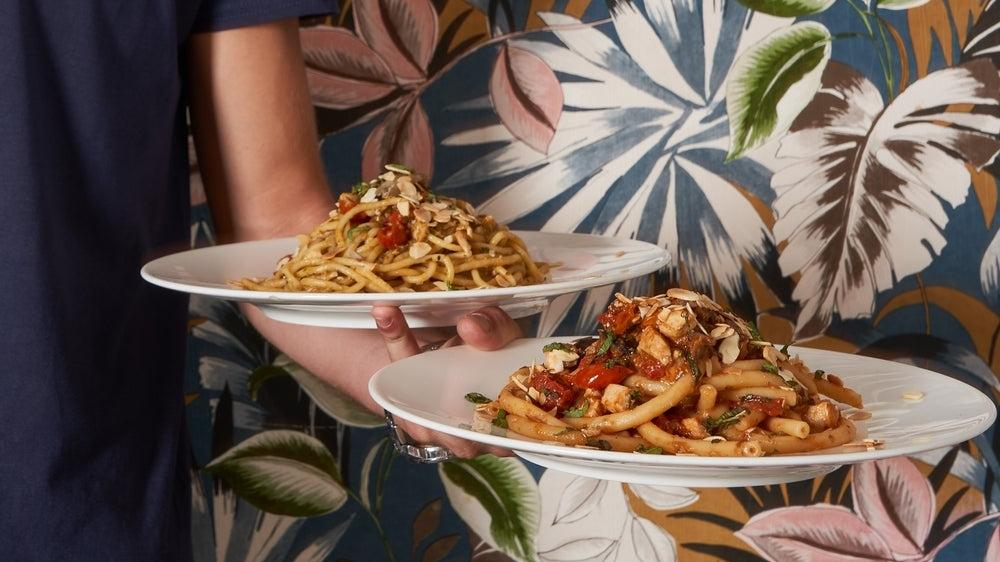Restaurants And Grocery Stores Fight For Customers' Loyalty
As consumers budgets go down, opportunities for value are trending up.
Here at The Takeout, we've covered everything from the deaths of well-known foods (SnackWell's, Choco Taco) to viral TikTok trends, but there's one emerging phenomenon that is less splashy yet no less important: the fierce competition emerging between fast food restaurants and supermarkets. With inflation dominating our news feeds this year, both retailers and consumers are rethinking the notion of shopping for food. And for the latter group, it can amount to a whole lot of savings if done right.
As food prices continue to rise, online discussions between consumers and industry experts have been interesting to watch. On LinkedIn, for example, there's been some spirited discourse on how to navigate this issue going into 2023. Some business leaders emphasize how grocery stores must plan for the future, while others advise grocery and restaurant chains to focus on the customer experience—and some suggest radical changes like applying the auction theory to reduce grocery prices. There's no shortage of opinions and advice, all of which comes back to the basics of supply and demand.
A supply-and-demand mismatch
Supply chain issues have permeated most of 2022, driving up the price of many staples including eggs, which have seen a cost increase of 40%, and butter and margarine, which have gone up by 29%.
The U.S. Bureau of Labor Statistics, the agency that tracks consumer price indexes (CPI) month to month, recently reported that the CPI for all items "increased 7.7 percent for the 12 months ending October." While this may not sound like great news, it still represents "the smallest 12- month increase since the period ending January 2022," according to the BLS report. So, prices are still going up, but not as steeply.
Depending on which industry expert you ask, the reasons for this supply and demand discrepancy varies. Aaron Parrott, managing director at Deloitte, told The Wall Street Journal that the issue lies in companies choosing not to increase their supply because "they don't believe demand and supply will be long term and sustainable." Meanwhile, Garvin Jabusch, Chief Investment Officer at Green Alpha Advisors, believes that companies did not invest enough in research and development and emerging trends, causing them to stay behind.
What restaurants and supermarkets are offering
Both fast food chains and supermarkets have been watching consumer spending behavior and doing their best to adapt to current needs. In September, for example, Papa Johns began offering $6.99 pizzas along with a $6 mix-and-match deal, likely a move to lure in customers following the dip in same-store sales the chain saw in Q3.
Meanwhile, Wendy's resurrected its $5 Biggie Bag bundle and a 4 for $4 option. And let's not forget Burger King, McDonald's, Popeyes, and Wingstop, all of whom are promoting chicken sandwich combo deals, all under $10 and perhaps more eye-catching (and definitely more profitable for the restaurant) than a la carte items alone.
But grocery stores are going big on seasonal promotions, too, as well as offering coupons and free delivery on grocery purchases. Midwest-based supermarket chain Meijer recently held its ninth "Very Merry Meijer" event in which shoppers were surprised with $1,000 shopping sprees. Tops Markets LLC, a New York–based supermarket chain, is currently offering a BOGO deal on meat, in addition to rolling out digital coupons. And of course, ALDI, a budget supermarket leader, offered 2022 holiday groceries at 2019 prices as part of its "Thanksgiving Price Rewind" promotion.
As both restaurants and grocery chains rush to retain customer loyalty by offering attractive discounts, which industry will start off 2023 in a healthier place? With so many promotional deals to be had, a restaurant meal might be every bit as economical as a homemade one—as long as you don't order via third-party delivery apps.
